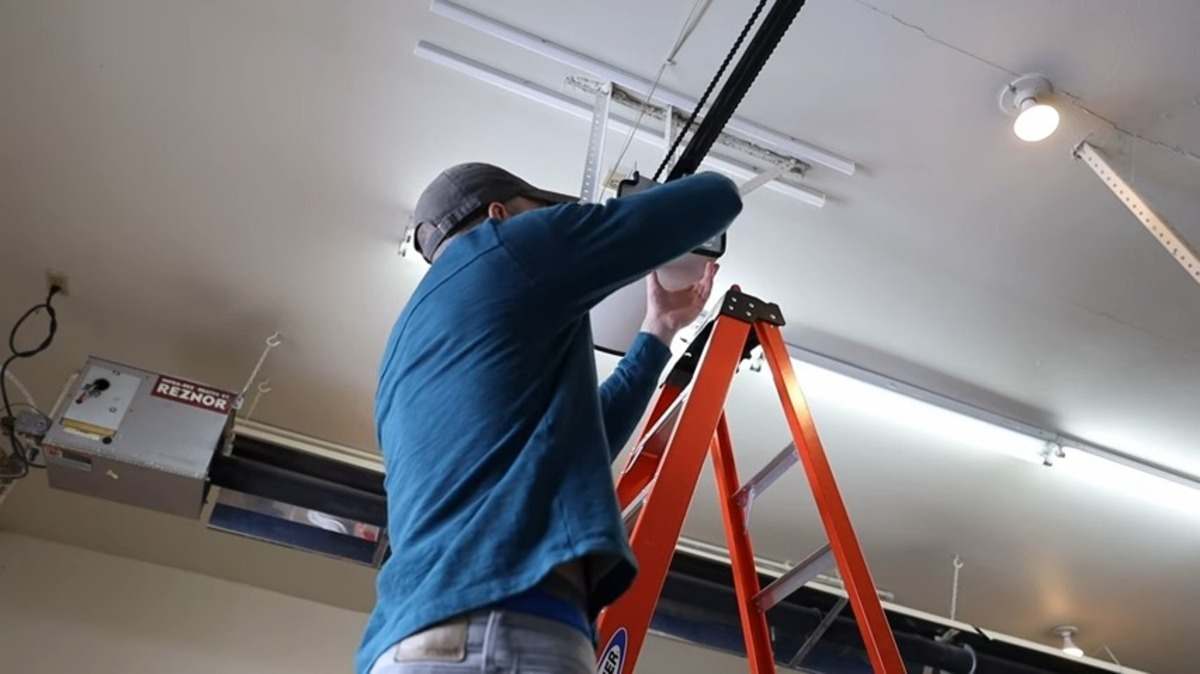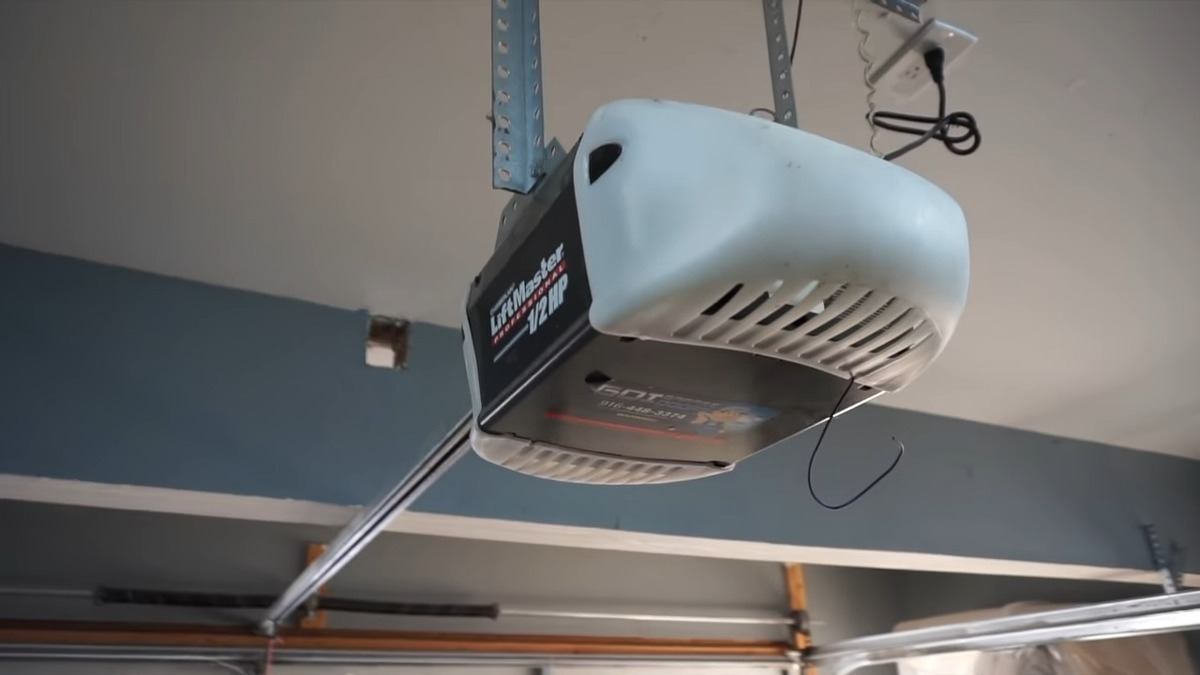Affiliate Disclosure: We may earn money or products from the companies mentioned in this post.
As technology advances, so do the methods to secure these vital access points. If you’re a homeowner or someone with a garage door opener, you may have wondered about the security and convenience aspects of your current setup. Specifically, you may ask yourself, “Can you change the signal on a garage door opener?”
In this blog post, we will delve into the world of garage door opener signals and explore the possibilities of changing them. We’ll discuss why you might consider modifying the signal, such as enhancing security, dealing with interference, or ensuring compatibility. Additionally, we’ll shed light on the DIY approach, examining whether you can tackle the signal change yourself or if professional assistance is necessary. We’ll discuss legal and ethical aspects to help you make informed decisions.
Can You Change the Signal on a Garage Door Opener?
Yes, it is possible to change the signal on a garage door opener in certain cases. Changing the signal frequency can help enhance security and prevent unauthorized access to your garage. It can also address interference from other devices or neighboring garage door openers. However, the ability to change the signal depends on the specific model of your garage door opener.
If you’re considering changing the signal on your garage door opener, it’s essential to consult the manufacturer’s guidelines or the user manual for your specific model. Some manufacturers provide instructions on changing the signal or frequency, while others may not offer this option. It’s important to follow the recommended procedures and guidelines provided by the manufacturer to ensure proper functioning and avoid any potential risks or voiding the warranty.
Guide on How to Change Frequency on Garage Door Opener
Perhaps you’ve recently experienced interference from a neighbor’s remote, or maybe you’re simply looking to improve the overall performance of your garage door system. Whatever the case, the ability to change frequencies on your garage door opener can solve these common problems.
Step 1: Identify the Type of Garage Door Opener
First, you need to determine what type of garage door opener you have. There are two main types: older models that operate on DIP switches and newer models that utilize a rolling code system.
The method for changing the frequency will vary depending on your opener type. If unsure, consult your garage door opener’s manual or the manufacturer for guidance.
Step 2: Locate the Frequency Setting Button
Once you know the type of garage door opener you have, it’s time to locate the frequency setting button. This button is usually found on the opener’s motor unit, which is typically mounted on the ceiling of your garage. Look for a small button labeled “Learn” or “Smart/Learn” near the antenna wire.
Step 3: Clear the Existing Frequency Code (for rolling code systems)
If your garage door opener uses a rolling code system, you must clear the existing frequency code before programming a new one. To do this, press and hold the frequency setting button until the indicator light on the opener turns off. This process usually takes about 10 to 15 seconds. Once the light goes off, you’ve successfully cleared the previous frequency code.
Step 4: Set the New Frequency Code (for rolling code systems)
After clearing the existing frequency code, it’s time to set a new one. Press the frequency setting button again, but this time release it quickly. The indicator light should start blinking or flashing, indicating the opener is ready to learn a new code. Be prepared to move swiftly to the next step.
Step 5: Program the New Frequency Code (for rolling code systems)
With the indicator light flashing, grab your remote control and press the button you wish to program.
Hold it until the indicator light on the opener stops flashing and remains lit. This step is crucial as it connects the remote and the garage door opener, synchronizing the new frequency code.
Step 6: Test the New Frequency Code
Now that you’ve successfully programmed it, it’s time to test it. Stand inside your garage and use the remote to open and close the garage door several times. Ensure that the door responds accordingly and there are no unexpected issues if the door operates smoothly; congratulations! You’ve changed the frequency of your garage door opener.
Step 7: Resetting DIP Switches (for older models)
The process is slightly different if your garage door opener operates on DIP switches. Start by opening the remote control and the motor unit of the opener. Locate the DIP switches on both devices. To change the frequency, you must match the switch positions on the remote control to those on the opener’s motor unit. Make sure they are set to the same pattern or code.
Step 8: Test the Frequency Change (for older models)
After setting the DIP switches to match, it’s time to test the frequency change. Close both the remote control and the motor unit. Stand inside the garage and use the remote to open and close the door. If the door responds correctly, you’ve successfully changed the frequency of your garage door opener.
Can I Change the Signal on My Garage Door Opener Without Professional Assistance?

Changing the signal on a garage door opener without professional assistance can be challenging and is not recommended for most individuals. Garage door openers use complex systems and technologies to ensure proper operation and security. Altering the signal without proper knowledge and expertise can lead to malfunctions, security vulnerabilities, and potential damage to the opener.
Changing the signal on a garage door opener typically involves reprogramming the opener unit itself and the remote controls or associated keypads. This process may require accessing the control panel on the opener, entering specific codes, or following a series of steps outlined in the manufacturer’s instructions.
Professional assistance is recommended because garage door opener systems vary widely in terms of models, brands, and technologies. A professional technician has the expertise and experience to accurately identify the appropriate procedures and programming methods for your specific opener.
Additionally, professional assistance ensures that your garage door opener’s safety and security features are not compromised during the process. Garage doors are an important entry point to your home, and tampering with the signal without the proper knowledge could expose your property to potential security risks.
To ensure your garage door opener’s safety, security, and proper functioning, it is best to consult a qualified professional who can guide you through the process or perform the signal change for you.
Security Risks of Changing the Signal on a Garage Door Opener
Many of us may not realize that changing the signal or code on our garage door opener can significantly impact our home’s security.
- Signal Interception: One potential security risk of changing the signal on a garage door opener is a signal interception. Traditional garage door openers rely on fixed codes or frequencies to communicate between the remote and the opener. Hackers with specialized equipment can intercept these signals and gain unauthorized access to your garage.
- Rolling Code Technology: Most modern garage door openers employ rolling code technology to combat signal interception. Rolling code technology changes the opener’s code with each use, making it difficult for hackers to predict and replicate the code sequence. However, some older garage door opener models may still use fixed codes, which poses a higher security risk.
- Malicious Code Cloning: Changing the signal on a garage door opener usually involves reprogramming the remote control. If reprogramming is not done securely, it can leave your system vulnerable to malicious code cloning. In such cases, attackers can intercept the reprogramming signals and replicate the new code, essentially gaining unauthorized access to your garage.
- Professional Assistance: To minimize security risks, seeking professional assistance when changing the signal on a garage door opener is recommended. Professional technicians have the expertise and knowledge to ensure a secure reprogramming process, reducing the risk of signal interception or code cloning.
- Regular Maintenance and Updates: Regardless of whether you change the signal on your garage door opener, performing regular maintenance and updates is crucial. Keep an eye on firmware updates released by the manufacturer to address any security vulnerabilities. Additionally, ensure that your garage door opener is in good working condition, and consider upgrading to a modern system with rolling code technology if you have an older model.
- Additional Security Measures: Changing the signal on your garage door opener is just one aspect of maintaining overall home security. Consider implementing additional security measures such as installing cameras, motion sensors, or a smart home security system. These measures provide an extra layer of protection for your home, complementing the security provided by the garage door opener.
Is Changing the Signal on My Garage Door Opener After a Break-in Necessary?
After a break-in, changing the signal on your garage door opener is highly recommended as a precautionary measure. When burglars gain access to your garage or steal your remote, they can easily use it to enter your property in the future. Changing the signal ensures that the stolen remote or any compromised access codes become ineffective, enhancing the security of your garage and home.
Garage door openers typically offer various methods for signal or code modification. Consult your opener’s user manual for specific instructions on changing the signal frequency, reprogramming the remote, or resetting the access code. Sometimes, you may need to reset the opener entirely and reprogram all remotes and keypads.
Changing the signal prevents unauthorized individuals from easily gaining entry to your garage. It adds an extra layer of security, safeguarding your belongings and reducing the risk of future break-ins. Additionally, it provides peace of mind, knowing that your garage door opener is no longer vulnerable to the stolen remote or compromised codes.
Conclusion
the ability to change the signal on a garage door opener is a valuable feature that enhances the security and convenience of your home. By changing the signal frequency or reprogramming the code, you can protect your garage and belongings from potential intruders. Whether you’re looking to update your garage door opener’s signal for added security or want to reset the code for peace of mind, it’s important to consult your owner’s manual or contact the manufacturer for specific instructions.
Remember to follow the recommended steps carefully to ensure a successful signal change. Modifying the signal on your garage door opener can safeguard your property and enjoy a greater sense of security in your home.


